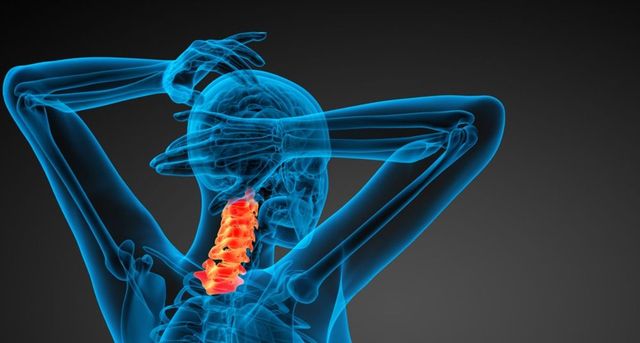Everything You Should Know About Back Decompression Therapy
Wiki Article
All Concerning Spinal Decompression: Reliable Solutions for Spinal Health and Wellness
Spinal decompression treatment has actually emerged as a sensible option for those seeking relief from numerous spinal problems. This non-invasive therapy targets the origin of discomfort, such as herniated discs and persistent neck and back pain. Understanding its applications and concepts can lose light on just how it advertises total spinal health and wellness. What are the specific benefits and strategies included in spinal decompression? Exploring these concerns may expose beneficial insights for people considering this strategy.Understanding Spinal Decompression Therapy
Exactly what is spinal decompression therapy, and just how does it function? Spinal decompression therapy is a non-invasive therapy focused on soothing pressure on the spine's discs and nerves. It employs specialized tools to delicately extend the spine, creating negative pressure within the discs. This negative pressure assists in the repositioning of herniated or bulging discs and urges the influx of vital nutrients and liquids right into the affected areas.Individuals typically exist on a mechanized table that supports the spine while enabling controlled traction. The treatment can target various spinal problems, including chronic back disc, pain, and sciatica deterioration. Procedure are typically painless and can last from 30 to 45 mins. While numerous patients experience prompt alleviation, a collection of sessions may be suggested for finest outcomes. On the whole, spinal decompression therapy stands for an all natural method to spinal health, intending to restore feature and promote total health.
The Scientific Research Behind Spinal Decompression
Spinal decompression treatment is grounded in concepts of biomechanics and physical reaction to pressure adjustments within the spinal column. This non-invasive therapy intends to reduce spinal disc pressure, which can add to discomfort and pain. By employing grip strategies, spinal decompression develops an unfavorable stress environment within the intervertebral discs. This unfavorable stress facilitates the repositioning of herniated or protruding discs and promotes the increase of vital nutrients and liquids, assisting in the recovery process.Study shows that spinal decompression can bring about an increase in disc elevation, which might ease nerve root compression. Back Decompression Therapy. The therapy also aims to improve spinal placement, potentially boosting overall biomechanical feature. Comprehending these clinical principles aids practitioners apply spinal decompression properly, making certain that individuals get targeted treatment tailored to their details spinal conditions. In general, the scientific research behind spinal decompression highlights its significance in the field of spinal wellness
Advantages of Spinal Decompression
While numerous individuals look for remedy for chronic pain in the back, the benefits of spinal decompression prolong past mere discomfort administration. This healing method help in boosting spinal health by promoting proper placement and reducing stress on intervertebral discs. Boosted blood circulation is an additional remarkable benefit, as spinal decompression assists in much better blood flow to the spine, beneficial surrounding tissues and increasing healing processes.In addition, spinal decompression can lead to enhanced versatility and boosted array of activity, making it possible for individuals to participate in everyday tasks with better convenience. Many patients report boosted general health and a reduction in stress degrees, as reducing neck and back pain can considerably enhance quality of life.
Spinal decompression may serve as a precautionary procedure, assisting to avert future spinal problems by maintaining perfect spinal feature. Overall, the multifaceted benefits of spinal decompression emphasize its relevance in promoting long-term spinal health and wellness.
Kinds Of Spinal Decompression Methods
Numerous strategies exist for spinal decompression, each developed to ease stress on the spine and improve general wellness. One typical method is mechanical spinal decompression, which makes use of a traction table to gently extend the spine, developing adverse stress in the discs. Another strategy is manual spinal decompression, performed by a chiropractor, that applies controlled pressure to realign the spine and soothe stress.Furthermore, there are non-invasive therapies such as inversion treatment, where individuals hang upside down to promote spinal elongation. Additionally, workouts that concentrate on enhancing core muscle mass can add to spinal assistance and decompression.
Some experts use advanced methods like spinal decompression tools, which are engineered to supply targeted relief. Each technique aims to boost spinal alignment, lower pain, and improve mobility, satisfying the unique needs of individuals seeking alleviation from spinal pain.
What to Anticipate Throughout a Spinal Decompression Session
Throughout a spinal decompression session, individuals can expect a series of preparation actions made to guarantee their comfort and safety and security. The session itself commonly entails a combination of restorative techniques focused on alleviating stress on the spine. Recognizing these elements can aid people feel a lot more at convenience prior to and throughout the therapy.Treatment Preparation Steps
As clients prepare for a spinal decompression session, they can anticipate a carefully structured procedure designed to ensure their convenience and safety. Specialists will perform a comprehensive assessment, evaluating medical background and present symptoms to tailor the therapy. Individuals might be recommended to use comfortable clothing and eliminate any kind of fashion jewelry that might conflict with the procedure. It's also typical for clinicians to describe the innovation and methods made use of in spinal decompression, ensuring people comprehend the procedure and its benefits. Furthermore, patients might be instructed to moisturize adequately prior to the session. This preparation intends to develop a desirable atmosphere for spinal health and wellness, enabling people to really feel safe and secure and informed about their treatment trip.Session Experience Overview
A back decompression session normally unravels in a tranquil and regulated environment, where people are located easily on a specialized table designed for the treatment. The professional begins by explaining the process, guaranteeing the person recognizes each step. When settled, gentle grip is related to the spine, developing space between the vertebrae to relieve pressure on the discs and nerves. Clients may feel a mild stretching experience, however pain ought to be very little. Procedure typically last regarding 30 to 45 minutes, throughout which the professional checks the individual's feedback. Afterward, people may obtain recommendations for follow-up care or exercises to boost results. In general, the experience aims to promote relaxation and recovery, cultivating a feeling of health.That Can Profit From Spinal Decompression?
That stands to obtain the most from spinal decompression treatment? People suffering from persistent pain in the back, herniated discs, or degenerative disc illness are main candidates for this treatment. Those experiencing sciatic nerve pain or tingling in the limbs may additionally benefit considerably, as spinal decompression can aid ease pressure on the spinal nerves. Furthermore, professional athletes recovering from injuries or people with postural concerns often find alleviation with this treatment.Individuals looking for a non-invasive option to surgery for their spinal health issues might consider spinal decompression as a practical alternative. It is vital for prospective candidates to speak with medical care experts to figure out the appropriateness of this treatment for their specific problems. Generally, spinal decompression treatment can give substantial benefits for a varied series of individuals, improving their total lifestyle and advertising much better spinal health.
Tips for Keeping Spinal Health After Therapy
After undertaking spinal decompression therapy, maintaining spinal health is vital for long-term well-being. Executing normal workout routines, being mindful of posture, and establishing an ergonomic work space can substantially contribute to a much healthier spine. These methods not just support recuperation but additionally assist avoid future issues.
Regular Exercise Routines
Maintaining spinal health and wellness adhering to therapy is necessary for lasting recuperation and total well-being. Regular exercise routines play a vital duty in this process. Taking part in low-impact activities such as swimming, walking, and cycling can help strengthen the muscle mass supporting the spine, boost adaptability, and boost total flexibility. Incorporating core-strengthening workouts is specifically valuable, as they offer security and support to the spinal column. Furthermore, gentle extending routines can ease tension and advertise relaxation in the back muscle mass. It is essential to speak with a medical care specialist prior to starting any kind of brand-new exercise program to guarantee it lines up with private recovery objectives. Consistency in these activities cultivates an aggressive technique to spinal health and wellness, aiding in the avoidance of future issues.Position Awareness Strategies
A solid understanding of pose can greatly affect spinal health throughout the recuperation process. People must consciously keep an upright position, making sure that the head is straightened with the spine and shoulders are relaxed. Frequently signing in with one's stance throughout the day can assist enhance good routines. When resting, making use of a supportive chair that promotes back support is essential. In addition, standing for long term periods calls for weight distribution between both feet and involving the core muscles. Practicing mild stretches and mobility exercises can also boost understanding of posture. Mindfulness strategies, such as deep breathing, can assist in recognizing tension and promoting relaxation in the back. Applying these techniques fosters a positive strategy to spinal health post-treatment.Ergonomic Office Configuration
While an ergonomic workspace may appear like a deluxe, it is vital for those recuperating from spinal concerns. A well-structured setting can significantly aid in preserving spinal wellness. Secret components consist of a chair with lumbar assistance, which encourages proper stance, and a workdesk elevation that enables elbows to relax at a 90-degree angle. In addition, computer displays must be at eye level to minimize neck strain. Regular breaks to stand and stretch are vital, as extended sitting can intensify discomfort. Foot rests can also enhance blood circulation and reduce pressure on the reduced back. By focusing on these ergonomic principles, people can create a supportive workspace that fosters healing and advertises lasting spinal wellness, inevitably improving overall productivity and comfort.Frequently Asked Questions
Exactly How Lengthy Does Spinal Decompression Treatment Normally Require To Show Results?
Spinal decompression therapy commonly takes numerous weeks to reveal obvious outcomes. Most Family Chiropractic individuals experience renovation within 4 to 6 weeks, depending on specific problems and adherence to the advised treatment plan outlined by health care professionals.Are There Any Negative Effects Related To Spinal Decompression Treatment?
Spinal decompression treatment might create mild negative effects, such as temporary pain, muscular tissue convulsions, or discomfort after treatment. However, these symptoms are generally short-lived and solve rapidly, enabling clients to continue their treatment effectively.Can Spinal Decompression Therapy Be Done in your home?


Is Spinal Decompression Safe for Pregnant Ladies?
Spinal decompression is typically taken into consideration risky for expecting females as a result of prospective risks. It is vital for expectant mothers to consult health care specialists prior to going through any kind of spinal treatments to assure the security of both mommy and baby.Just how Typically Should I Undertake Spinal Decompression Therapy for Best Outcomes?
Generally, individuals ought to go through spinal decompression therapy 2 to 3 times a week for ideal results. Nevertheless, the regularity may differ based upon individual conditions and need to be determined by a medical care specialist.Spinal decompression therapy is based in concepts of biomechanics and physical feedback to pressure modifications within the spinal column. Recognizing these scientific concepts assists professionals apply spinal decompression effectively, making certain that patients receive targeted treatment tailored to their certain spinal conditions. Spinal decompression may serve as a precautionary action, helping to avoid future spinal issues by maintaining ideal spinal function. People looking for a non-invasive alternative to surgery for their spinal health and wellness worries may consider spinal decompression as a sensible option. After going through spinal decompression treatment, keeping spinal health is vital for lasting health.
Report this wiki page